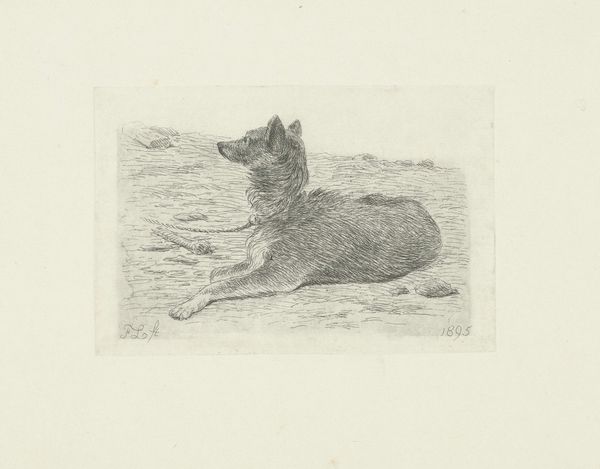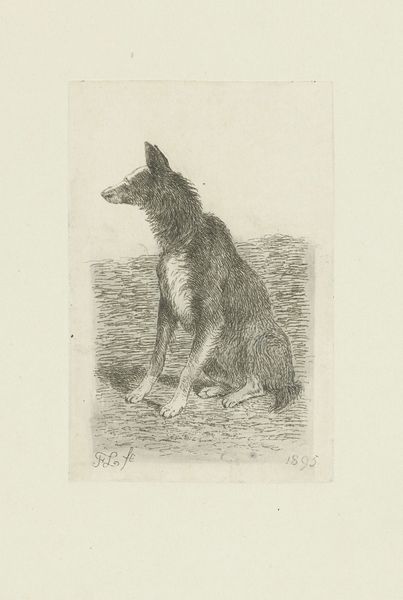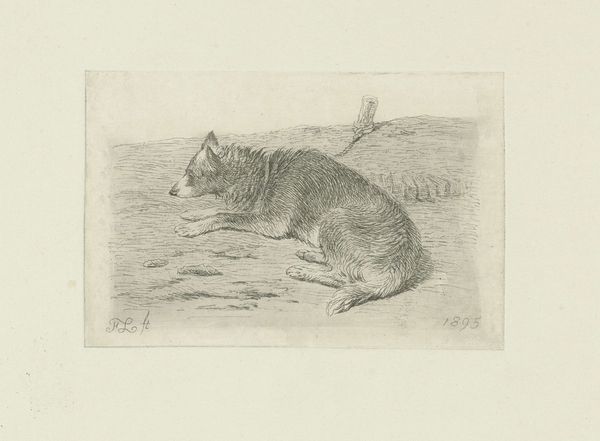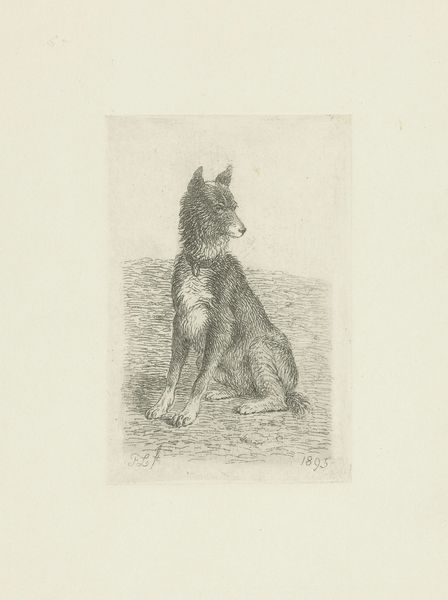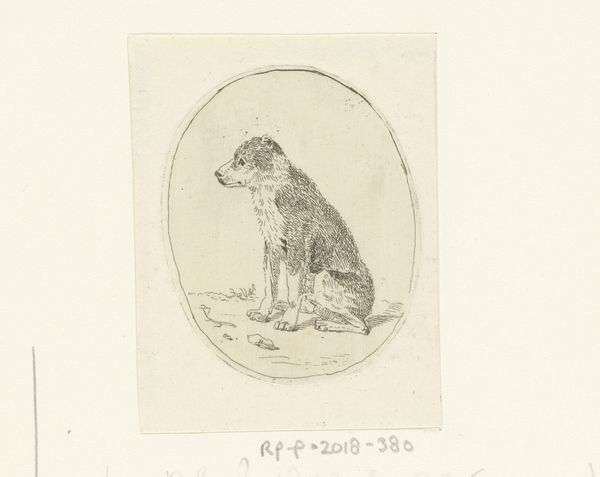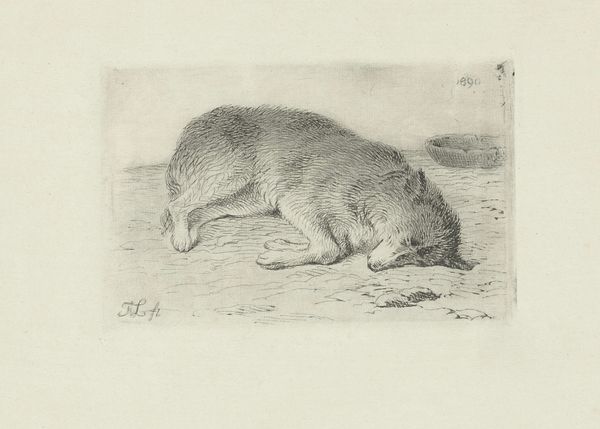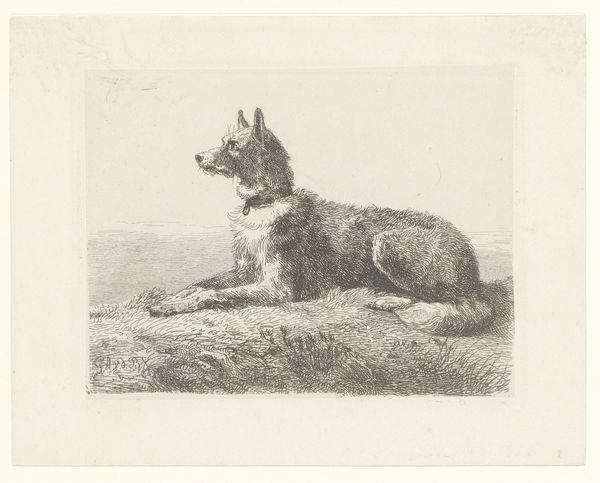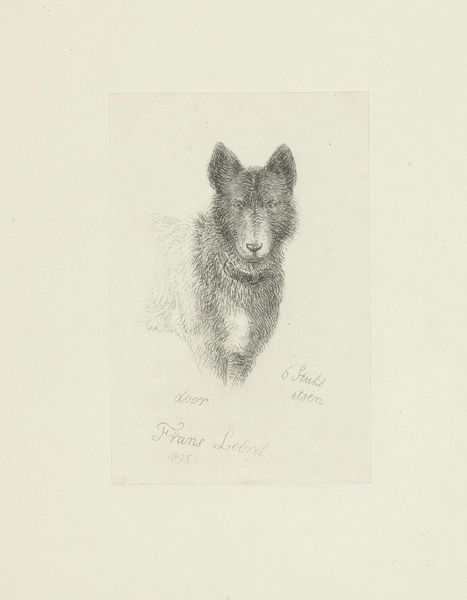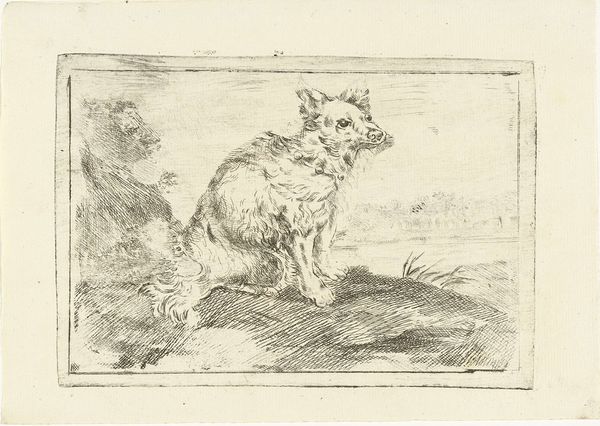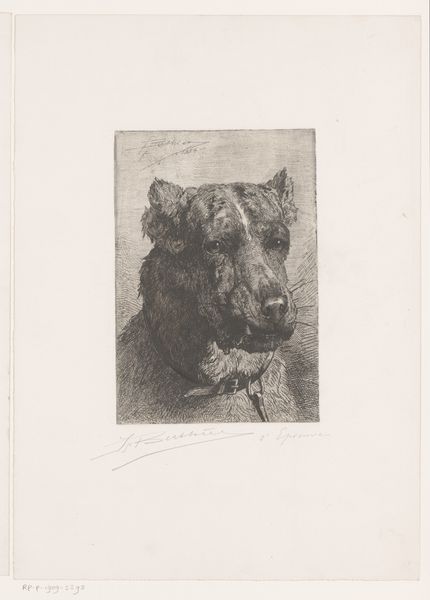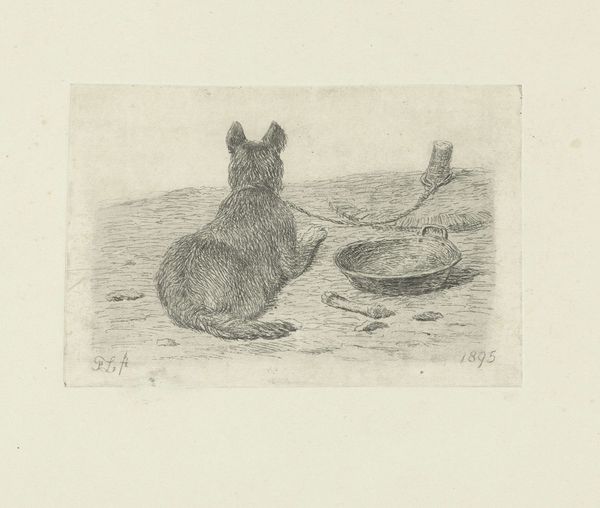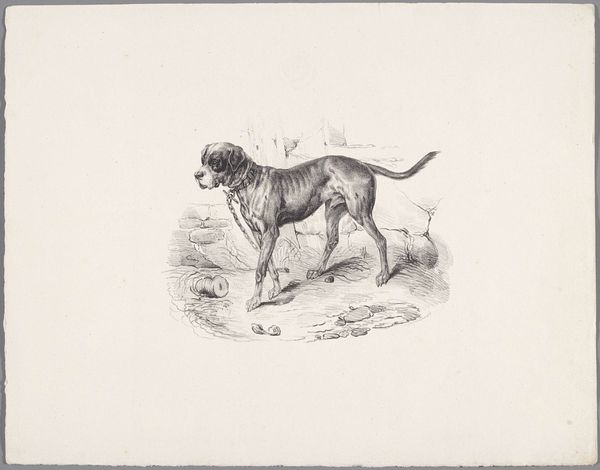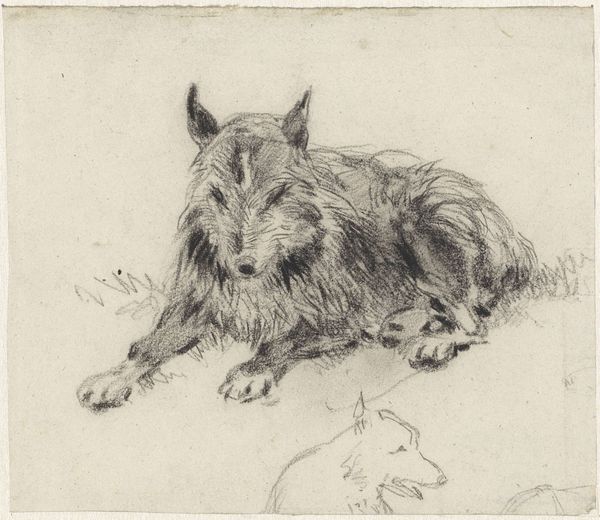
drawing, graphite
#
portrait
#
drawing
#
animal
#
dog
#
landscape
#
graphite
#
realism
Dimensions: height 120 mm, width 78 mm
Copyright: Rijks Museum: Open Domain
Curator: Here we see "Zittend hond van achter gezien," which translates to "Sitting Dog Seen from Behind," a graphite drawing created around 1895 by Frans Lebret. Editor: There’s a somberness here, a feeling of quiet observation. The dog seems caught in a moment of introspection or perhaps simply vigilant watchfulness. The subtle shading adds a touch of melancholy to the scene. Curator: Indeed. This artwork invites us to reflect on human-animal relationships, especially within the context of late 19th-century Dutch society. Consider the dog's symbolic roles: loyalty, servitude, even societal status mirrored through pet ownership. Editor: I immediately noticed how Lebret positioned the dog. It's not a domesticated pet lounging; instead, it is shown alert within what appears to be a stark, perhaps cultivated landscape. What message did it aim to suggest through the image? Does the way he depicts animals affect the symbolism we now give dogs, the 'man's best friend?' Curator: That tension between domesticity and something more wild or watchful is key, a push-and-pull emblematic of shifting attitudes toward nature and labor during industrialization. Editor: Visually, the pose reminds me of ancient depictions of guardians, vigilant figures watching over sacred spaces. Do you think the artist drew upon a certain image of the canine and the concepts and symbols associated with that in European art and symbolism? Curator: That’s a valid connection. It speaks to an ingrained visual language linking dogs to protection, loyalty. The somewhat hazy style adds, from my point of view, to a reflection about something bigger, almost something archetypal, about animal companions as essential participants of society throughout Western art history. Editor: I’m struck now thinking that what felt simple becomes more nuanced. This wasn't a study in domesticity but, perhaps, an allegory for something far more profound within humanity and the West: vigilance within civilization. Curator: Absolutely. It underscores how even the seemingly mundane—a dog sitting—can be deeply intertwined with societal anxieties, hopes, and historical narratives that have followed certain civilizations for thousands of years.
Comments
No comments
Be the first to comment and join the conversation on the ultimate creative platform.
